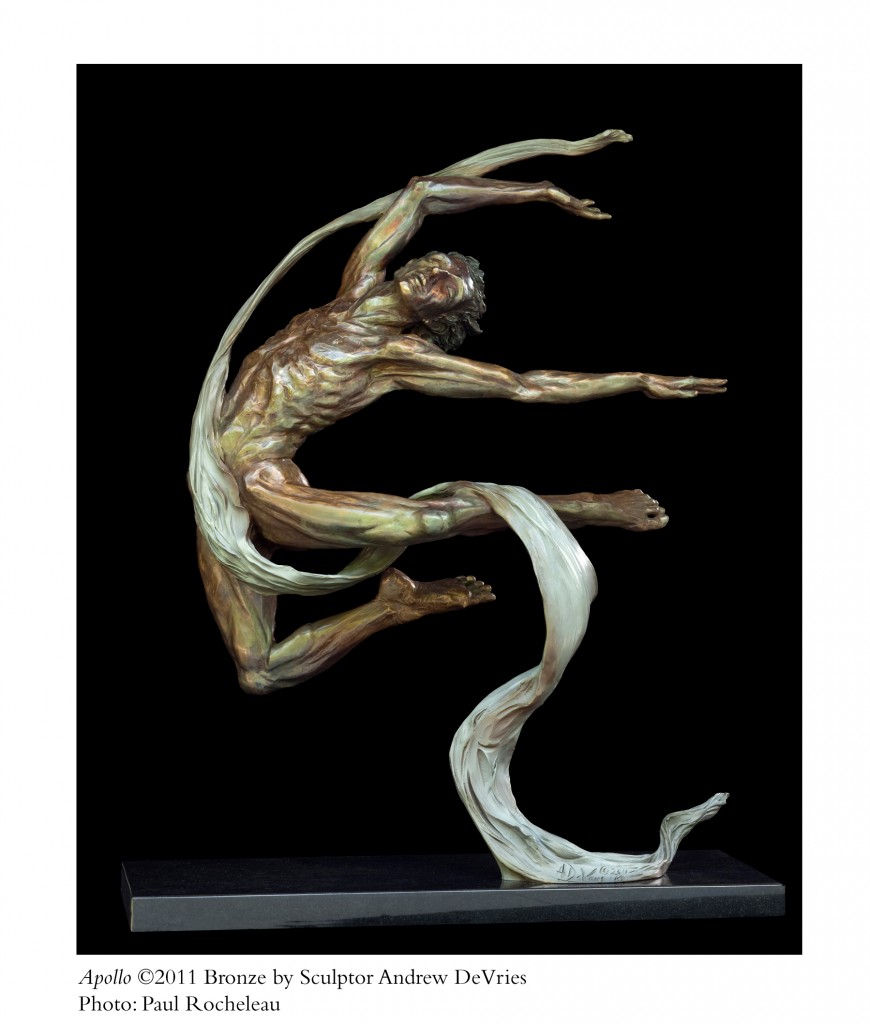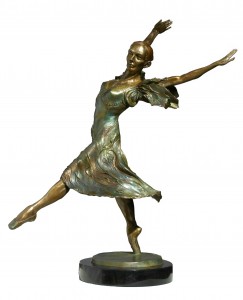Capturing the spirit of dance can be a challenge in any art form, but sculpture is a medium where that is that particularly difficult. To convey a sense of movement while staying true to form in three dimensions is something few artists can do–much less master.
But there are always exceptions.
Andrew DeVries is one such artist, and he was selected by the National Museum of Dance to display some of his work with dancers. We asked Assistant Director Sarah Hall Weaver to share more information about this artist and his work, which we are pleased to share with you here…
What made you select Andrew’s work for the exhibit “Homage to Dance”?
I had been looking for a 3d exhibit for a while actually when Andrew and his wonderful wife, Patricia, approached us. Our museum has a 2d fine art show and a variety of other exhibitions each year but we had yet to welcome sculpture. Representing dance without being able to have live dancers on hand can sometimes be a challenge. We are constantly looking for new and diverse ways to relay the world of dance to our guests. On top of looking for a sculpture exhibit, we were also looking for the RIGHT sculpture exhibit and it came down to the fact that Andrew’s work displayed the level of advanced dance understanding that I was looking for.
Can you talk a bit about what his work is like?
Andrew’s work is an outstanding combination of master bronze work and individual aesthetic. What really speaks to me is that even though these are in fact stagnant, heavy objects, they still imply very clear movement. You instinctively understand where that dancer is coming from and where they are going. The muscles in each body are sculpted with that advanced understanding I mentioned earlier – Andrew knows how the body works, how muscles, bones, all the body systems work together to allow dance movement; and even if the viewer doesn’t arrive with their own understanding, they can learn something from these pieces. His pastels are equally revealing of his dance models. The gestures and the expressions indicate very clear emotions and physical states yet these are not overworked images. They have a light, airy quality that really complements the intensity of the bronzes.
How many pieces will be on display at the museum and how were they chosen?
There are over forty bronzes on display, some of which [if spring ever really comes around!] will be displayed outside in our entrance gardens. There are also twenty pastels on display. We approach each exhibit as its own experience and in this particular case I left it up to Andrew to select the works and layout. He and Patricia are quite the team and have got the exhibition business down to…well…an art.
Is there a piece you are particularly drawn to?
This is a tough question, I have a lot of favorites…If I had to pick one I would say Apollo. It is the first sculpture that greets you as you walk into the gallery and something about it keeps you right there for a while. I’ve watched several of our guests fall victim to it, they linger there much longer than I would normally credit a museum-goer per piece of artwork. Like I said, there are forty-one sculptures and twenty pastels – that’s a lot, but even with the excitement of seeing everything in this gallery, let alone the entire museum, this piece really seems to affect people. Myself included.
How long will his work be on display at the museum?
“Homage to Dance” will be on display through November 24th, 2013. Museum hours and admission can be found at www.dancemuseum.org. Andrew’s studio and gallery can also be visited in Massachusetts and information can be found at his website.
We are having an opening reception for this show on June 28th which will be a wonderful opportunity for guests to view the work for free, and to also meet Andrew in person!






